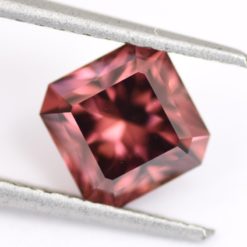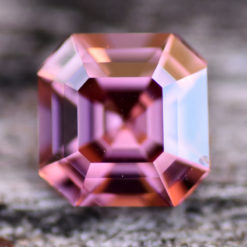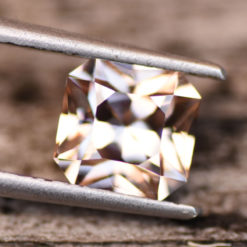No products in the cart.
Gemstone Information
Zircon Vs Cubic Zirconia – Two Different Gemstones
The gems Zircon and Cubic Zirconia are regularly mistaken for each other based on the fact that both stones have a close resemblance to diamonds. Both gemstones are transparent like diamonds and also have similar names which can make an average person assume that they are the same. While Zircon and Cubic Zirconia have similar names the stones have a lot of differences.
Unfortunately, the frequent confusion between both stones has a more negative effect on Zircon as it reduces the value of the gem. To correct this confusion, we will be looking at the features which make Zircon different from Cubic Zirconia.
Zircon Vs Cubic Zirconia – History
History of Zircon
Before looking at the differences between both gems, it is important to look at their histories. Zircon has a very long history as it is the oldest mineral ever discovered on earth. The oldest Zircon was found in Australia and based on the research carried out on the gem; it is as old as 4 billion years old. Zircon is made out of zirconium silicate. About 90% of Zircon existing are natural gemstones as the synthetic versions are very scarce.
History of Cubic Zirconia
Cubic Zirconia was found in the 1930s making it relatively new in the world of minerals when compared to the Zircon. The gem is made out of zirconium oxide. Zircon and Cubic Zirconia got their similar names based on the similarity of their source’s names. Due to the rareness of naturally occurring Cubic Zirconia, scientist began to make a synthetic versions of it. The synthesising of Cubic Zirconia went on for no less than 40 years before it was perfectly synthesised in the 1970s. Originally the purpose for synthesising the gem was to make it sufficient for industrial use. However there was no doubt that Cubic Zirconia could also be used for jewelry.
With the history of both stones explained, the next step is to look at the different features both stones present and decide on which is better.
Zircon Vs Cubic Zirconia – Facts
Value
- Zircon: Zircon has a higher value than Cubic Zirconia. This is because, in the gem market, natural gemstones always have a higher value than lab created gemstones.
- Cubic Zirconia: In terms of monetary value, the Cubic Zirconia can be said to be worthless. This is often the case with synthetic gems as a carat of Cubic Zirconia can go for as low as $20. Often times the gem is referred to as fake as it is made to look like D grade diamonds.
Durability
- Zircon: When measured on the Moh’s scale, the Zircon has a ranking from 6 – 7.5. For a stone to be seen as durable, it is important for it to have a ranking of 7 on Moh’s scale as Moh’s scale helps determine the hardness of the material. Having a 6 – 7.5 rating shows that Zircon is not as tough as Cubic Zirconia. With too much pressure, Zircon can be damaged. The stone can lose its color or take on a dull look when it is exposed to ultraviolet light such as sunlight, and it is also liable to have cracks and chips.
- Cubic Zirconia: When measuring the Cubic Zirconia with Moh’s scale, it has a ranking of 8 which shows a high level of durability. When the stone is worn it hardly gets chipped or bears and damage in general, even after long term use. When making use of cubic zirconia, over time, it might not be as clear and shiny as it originally is; hence it will require some cleaning and polishing from time to time. Also, the stone might need to get replaced, but it is hardly a problem because the cubic zirconia often comes at a low cost.
Clarity
- Zircon: Zircon is a naturally transparent gem. The stone naturally has very few impurities hence it has a high level of clarity. Unfortunately, some zircon stones over time can become cloudy and dull, and this reduces the overall value of the stone.
- Cubic Zirconia: Being lab created, manufacturers can easily change and adjust the final appearance of the Cubic Zirconia hence the stone has a high-level clarity. Often, the total absence of cloudiness in the stone makes it obvious that it is lab created.
Color
- Zircon: One of the most amazing and exciting features of Zircon is that it comes in a variety of colors. The stone gets its colors based on the trace elements which are present during the formation of the gems. Scientific studies have found that some of the stone’s elements are radioactive. During the processing of these gems, the radioactive elements are treated to make the gem safe for any use and also to make it more stable. Zircon can also be treated to make its color more visible and to increase the transparency. Zircon colors range from yellow, to pink, green and even blue. Green zircon is the rarest of the gem and is the most valuable of all the stones. Just like diamonds, Zircon can also be found in a colorless form, but unlike diamond, colorless Zircon is seen to have lesser value. When viewed in different angles and under different lights, some zircon stones exhibit a range of colors.
- Cubic Zirconia: Unlike Zircon, the color of Cubic Zirconia is often worked on by manufacturers. This is because Cubic Zirconia is synthetic hence the manufacturers have the power to design it to their favor. Cubic Zirconia manufacturers often go for colorless stones to make it resemble diamonds. Apart from colorless Cubic Zirconia, the stone is popularly manufactured in a pink shade. Other colors you can find Cubic Zirconia in are blue, black, red, green and orange.
Light display
- Zircon: Zircon naturally is a very sparkly kind of stone. It has high dispersion and luster. When placed under light, it sparkles, giving a display of fascinating color change. The cuts of the stone are made spectacularly to increase its light performance. Based on the double refraction of the zircon, it gives it great fire display and also makes it look as though it has more cuts than it does.
- Cubic Zirconia: This gem also has a high level of light performance. When placed under light, the stones sparkle also but the Cubic Zirconia does not meet up with the zircon in terms of light display. Cubic Zirconia also has a number of cuts like diamonds.
Conclusion
Despite the similarities of both stones, Zircon and Cubic Zirconia are very different gems in terms of their origin, value, clarity, color and so on. Each of these gems has its benefits and drawbacks. While Cubic Zirconia offers a number of admirable features such as affordability, durability and easy maintenance, the features offered by zircon surpass it in terms of value, light performance, and color. This makes it difficult to make a decision on which stone is better than the other. Based on the factors surrounding your purchase of the stone, you can easily make a decision on which stone would be most suitable for your use.




















